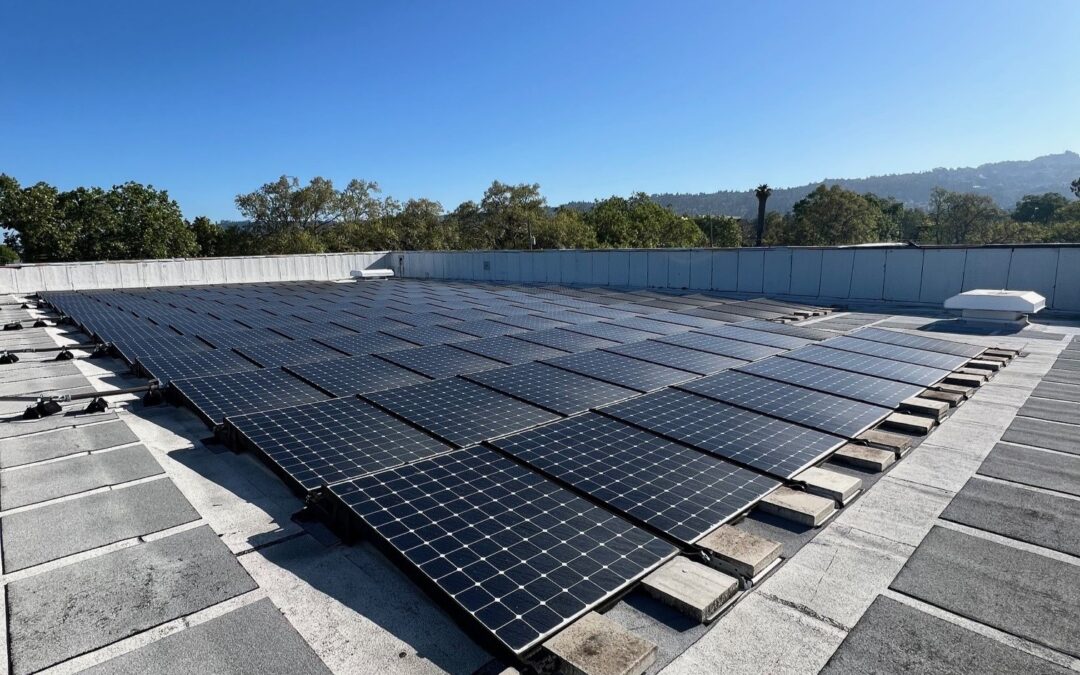Green sensibilities are changing the design and construction industries, with new sustainable technologies and innovations getting introduced to project plans at a quickening pace. California schools are adapting to these shifts, driven in part by updated building codes that call for increased levels of energy efficiency, sustainability and safety in public school facilities. Research supports this tilt toward greener practices, as many studies (including this example) have shown a link between environmentally-friendly classroom settings and improved student achievement.
Three members of Team VPCS (Ray Green, Jennifer Gibb and Eduardo Rivera-Garcia) sat down to discuss these trends and how they affect our district clients. The following is an excerpt from that conversation.
On financial planning
Ray: It’s a rare district that has more money than it needs. Part of our job is to explore all the short- and long-term financial implications of various approaches during the planning process. That’s certainly true when we consider green options. For example, heating a new building with natural gas might cost significantly less on an operational basis than heating with electricity, but that choice can lead to state-driven cost impacts when projects don’t comply with the latest green standards. We always work very closely with design and engineering teams so we can provide districts with analyses that incorporate up-front costs as well as operational costs. We want clients to be happy with their new buildings now and still be happy with them decades from now.
Jennifer: We’re conscientious not only about the capital funds that we’re responsible for stewarding, but also the operational impact of the improvements that a district makes. We always try to bring thoughtful options to our district leadership so they can choose.
Eduardo: When it comes to anticipating the coming wave of green technologies and sustainable systems, a big part of our job is pre-empting sticker shock. As Ray was saying, we want to help our district clients plan. We work hard to communicate what the immediate and the 20-year costs might be.
On building relationships
Jennifer: Sometimes, introducing green systems requires bringing in specialized team members such as energy consultants. In those cases, we just fold them into the larger team and forge new relationships, because that’s what we do so well. VPCS always works closely with all parties, whether or not they’re contracted under our purview. There’s always going to be a close integration between energy upgrades and ongoing construction upgrades, so those specialists’ work will overlap with ours. We’re here to ensure that our districts meet their regulatory requirements, regardless of who works on the project.
Eduardo: On that note, we also recognize that it can be difficult for contractors to adjust their way of doing things so that their work complies with green regulations or satisfies green certification programs. But that’s another part of our job that we take really seriously: making sure all team members know how to comply but also why that compliance piece is so critical.
On supporting district leaders
Ray: So much of our role is to get out in front of new green regulations and begin planning for them. That puts us in a better position to make sure our districts are educated on what these requirements are going to be.
Jennifer: That’s right, Ray. Districts might have a general goal of working toward sustainability, but we can step up to provide the analysis that factors into everything: funding strategies, construction techniques, building standards, the whole thing. Then we can have those conversations with district leadership and support them when they’re making those decisions.
On training operational staff
Jennifer: Our team is really thoughtful about including school district staff throughout the design and construction process. Whether it’s making sure they know how to maintain solar panels for peak performance or keeping HVAC systems in good working order. We won’t be on-site forever, so we help get site staff up to speed well before our work wraps up.
Eduardo: I agree, Jen. And that training doesn’t stop with district staff. Some districts have sustainability coordinator teams made up of teachers, students, parents, after-school staff, volunteers, you name it. It’s important to bring everyone up to speed on how new systems and technologies work so they can be actively engaged in the sustainability effort as building occupants.
On incorporating “smart” systems
Ray: Smart controls are a really positive element of this overall shift. I’m talking about automatic systems that manage lighting, temperature, shading, air flow – they’re just fantastic because they help minimize a building’s energy draw based on actual usage patterns of the people who are coming and going. Plus, new AI features help the systems learn and adapt. It’s encouraging to see that the technology is always improving.
On returning to our core mission
Ray: It’s pretty powerful to think about the practical impact these green technologies have on students. I’m talking about improved air quality, more comfortable interior temperatures and gentler lighting – how they combine to create better learning environments, which has a direct impact on student achievement. At the end of the day, that’s what we’re here to deliver.
Jennifer: Absolutely, Ray. Plus, the kids we’re here to serve are already so naturally sustainability-minded. These green standards that might be harder for leaders or communities to adjust to are tied to concepts that are already so normal to today’s students. They know it’s their future reality. And they’re so tech-savvy already, so they quickly understand how to interpret and interact with energy dashboards and other tools. Through these green infrastructure improvements, we’re able to educate kids on the impact they’re having on the environment and how they’re part of the bigger picture. So sustainable design and construction becomes part of the educational pedagogy we’re here to support. It always comes back to the kids.
May 28, 2024

